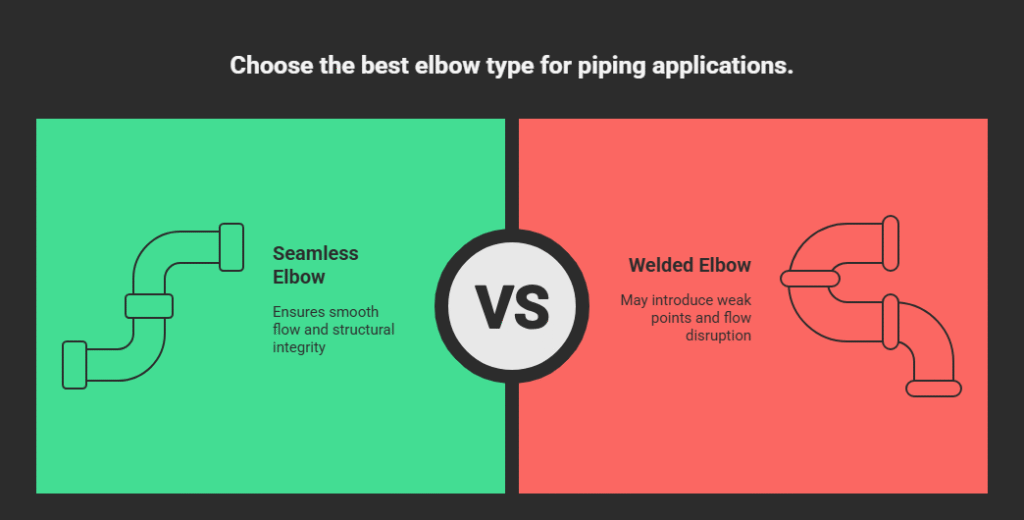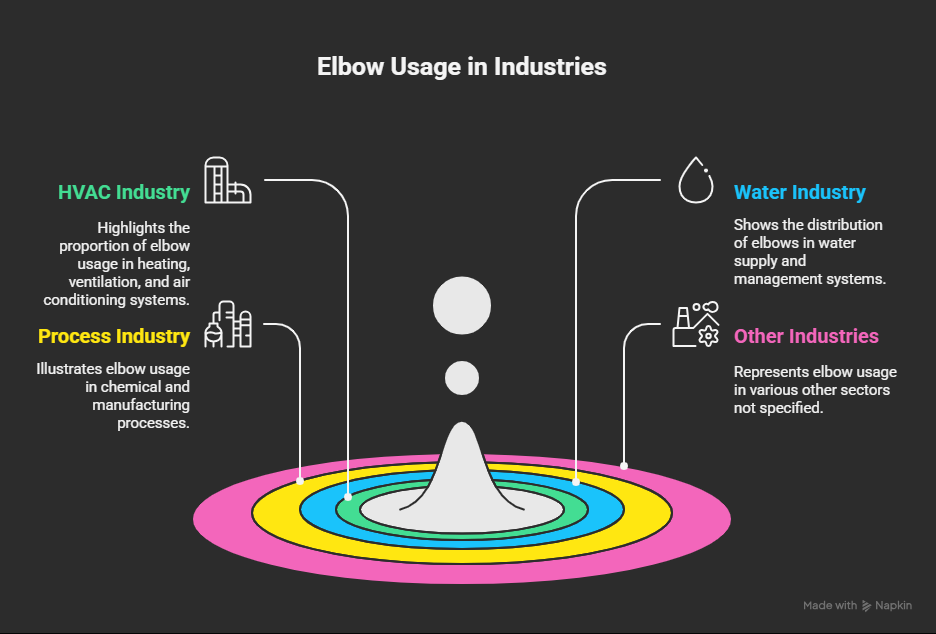Introduction
Mild Steel (MS) ERW elbows play a vital role in piping systems. In this post, Fortis Forge explains their importance, types, design considerations, and manufacturing details
What Is an MS ERW Elbow?
An MS ERW elbow is a bending fitting made of mild steel via Electric Resistance Welding (ERW). The process welds the seam along the pipe, then bends the pipe into an elbow shape. It connects pipes and changes flow direction.
MS = Mild Steel
ERW = Electric Resistance Welded
Elbow = a bend in the piping run
Because of its welded seam, an ERW elbow is cost‑effective for many industrial uses.
Applications:
Fluid transport systems
HVAC and air ducts
Water supply and drainage
Structural systems where piping routing is needed

Types & Classifications of MS ERW Elbows
2.1 By Bend Angle
90° elbows — most common for right‑angle turns
45° elbows — gentler redirection
Other angles (e.g. 60°) as custom
2.2 By Radius (Long vs Short)
Long‑radius (LR) elbows use a centerline radius of 1.5× the pipe diameter
Short‑radius (SR or Short Bend) may use 1× or 1.5× diameter, depending on class
For example, a short bend C class is popular. U.K & SONS+1
2.3 By Class (Thickness / Strength)
In India, elbows often come in classes like B, C, extra heavy, per IS or ANSI standards.
C class is heavy, used for higher pressures U.K & SONS+1
B class is medium duty U.K & SONS+1
2.4 By Connection Type
ERW elbows typically use butt‑weld ends, requiring weld joints to attach to pipes.
Manufacturing Process of MS ERW Elbows
Here’s a simplified process:
Start with a mild steel strip or coil
Form the strip into a cylindrical pipe with edges meeting
Weld the seam using electric resistance welding
Cut the pipe to length
Heat treat or anneal if needed
Bend (or press) the pipe into elbow shape
Finish, inspect, test
Quality checks include hydrostatic testing and pinhole testing before shipment
Design & Selection Criteria
When selecting an MS ERW elbow, you must consider:
Pipe size (nominal diameter)
Operating pressure and temperature
Fluid type: gas, water, chemicals
Corrosion allowance & coating
Wall thickness and class
Radius of curvature
Standards compliance (e.g. IS, ANSI, ASTM)
For example, for a 200 mm (8″) diameter and 45° C class elbow, one vendor lists a price and product spec. Indus Roof
Also consider flow losses: sharper bends (short radius) induce more pressure drop. Use long‑radius elbows when possible for better flow.
Advantages & Limitations
Advantages
Cost‑efficient for mid to large quantities
Strong weld seam gives good structural integrity
Easier to produce bends from standard pipes
Widely available in many sizes
Limitations
Seam weld may be weaker than seamless designs in extreme conditions
Thickness may be limited compared to seamless
Weld area needs careful inspection
Fewer options for complex alloy or high corrosion applications

Practical Use Cases
In HVAC ducting, MS ERW elbows redirect airflow
In water networks, they route pipelines under constraints
In process plants, they manage piping geometry in tight spaces
In low‑pressure structural piping, they serve both load and flow functions

Final Thoughts
MS ERW elbows offer a robust and economical choice for many piping systems. Fortis Forge can supply elbows tailored to your specs.
